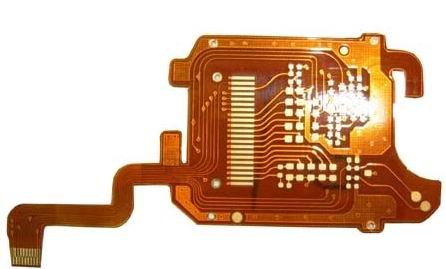1. Flexible circuit board electroplating

(1) The surface of copper conductor exposed in the pretreatment of
flex PCB electroplating after coating process may be contaminated by adhesive or ink, as well as oxidation and discoloration caused by high temperature process. In order to obtain a compact coating with good adhesion, the pollution and oxide layer on the surface of the conductor must be removed to make the surface of the conductor clean. However, some of these pollutants are firmly combined with copper conductor and can not be completely removed with weak cleaning agent. Therefore, most of them are treated with alkaline abrasives with certain strength and brush throwing. Most of the covering adhesives are epoxy resin and have poor alkali resistance, which will lead to the decrease of bonding strength. Although it is not obvious, in the electroplating process of flexible PCB, the corrosion resistance of the coating adhesive is poor, The plating solution may penetrate from the edge of the coating, and the coating may peel off in severe cases. In the final welding, the solder is drilled under the coating. It can be said that the pre-treatment cleaning process will have a significant impact on the basic characteristics of the flexible circuit board, we must pay full attention to the treatment conditions.
(2) When flexible PCB is electroplated, the deposition rate of electroplated metal is directly related to the electric field strength, and the electric field strength changes with the shape of the circuit figure and the position of the electrode. Generally, the thinner the wire width is, the sharper the terminal is, the closer the distance from the electrode is, the greater the electric field strength is, and the thicker the coating is. In the applications related to flexible circuit board, there are many cases where the width of wires varies greatly in the same circuit, which makes it easier to produce uneven coating thickness. In order to prevent this situation, a shunt cathode pattern can be attached around the circuit to absorb the uneven current distributed on the electroplating pattern, so as to ensure the uniform coating thickness on all parts to the greatest extent.
Therefore, we must pay attention to the structure of the electrode. A compromise scheme is proposed here. The standard for parts with high uniformity of coating thickness is strict, while the standard for other parts is relatively relaxed. For example, the standard for lead and tin plating by fusion welding and gold plating by metal wire bonding (welding) is higher, while the standard for lead and tin plating for general corrosion protection is relatively relaxed.
(3) There is no problem with the stain and dirt of flexible PCB electroplating, especially the appearance of the just electroplated coating. However, there are some stains, dirt, discoloration and other phenomena on the surface soon after. In particular, no abnormality is found during the factory inspection, but when the user receives the inspection, it is found that there is an appearance problem. This is due to inadequate rinsing, residual plating solution on the coating surface, after a period of time slowly chemical reaction caused. Especially flexible circuit board, because of its softness and unevenness, its concave part is easy to accumulate various solutions, and then it will react in this part and change color. In order to prevent this situation, not only should it be fully rinsed, but also it should be fully dried. Sufficient rinsing can be confirmed by high temperature thermal aging test.
2. Chemical deposition of flexible circuit board
When the circuit conductor to be electroplated is isolated and cannot be used as electrode, only chemical deposition can be carried out. In general, the bath used in electroless plating has strong chemical action, and ENIG process is a typical example. Chemical gold precipitation solution is an alkaline aqueous solution with very high pH value. When using this process, it is easy to get the plating solution under the coating, especially if the quality management of the coating lamination process is not strict and the bonding strength is low.
Due to the characteristics of the plating solution, it is easier for the chemical deposition of displacement reaction to get into the coating. It is difficult to obtain the ideal plating conditions by this process.
3. HASL of flexible circuit board surface treatment
Hot air leveling technology was originally developed for coating rigid PCB with lead and tin. Because of its simplicity, it is also applied to flexible PCB. Hot air leveling is to dip the PCB directly into the molten lead tin bath, and blow away the excess solder with hot air. This condition is very harsh for the flexible PCB. If no measures are taken for the flexible PCB, it cannot be immersed in the solder. The flexible PCB must be sandwiched between the screen made of titanium steel, and then immersed in the molten solder. Of course, the surface of the flexible PCB must be cleaned and coated with flux in advance.
Due to the harsh conditions of hot air leveling process, it is easy for the solder to drill from the end of the cladding layer to under the cladding layer, especially when the bonding strength between the cladding layer and the copper foil surface is low. Because polyimide film is easy to absorb moisture, when using hot air leveling process, moisture absorption will cause blistering or even peeling of covering layer due to rapid heating evaporation. Therefore, before the hot air leveling of FPC,
PCB manufacturers must dry and moisture-proof the flexible PCB.

